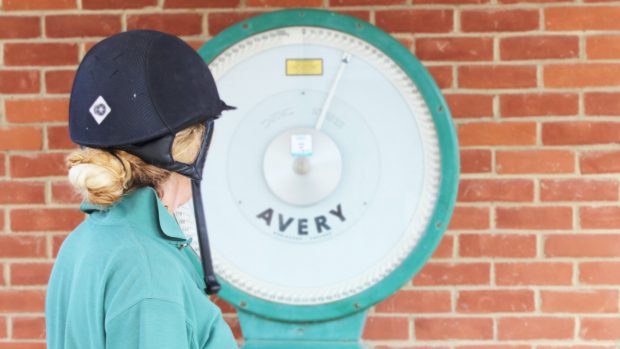Back pain in horses can originate from:
- the skin (eg saddle sore)
- ligaments (eg sacroiliac strain)
- vertebrae (eg overriding dorsal spinous process or “kissing spine“)
Good conformation is paramount. Long-backed horses are prone to muscle and ligament strains, while those with excessively short backs are susceptible to vertebrae problems. Dip or sway backed (abnormal sunken back) horses have a weakness, while those with roach backs (humped) typically lack suppleness.
Common causes of back pain in horses
- incorrectly fitting or poorly maintained saddle
- pain elsewhere, causing the horse to alter its action, so putting abnormal stresses on the back
- falling, slipping up
- twisting, turning abruptly
- jumping awkwardly
Detailed examination
View the back from both sides, particularly from behind, with the horse standing square, noting: skin lesions; lumps, rubs, chaffs and saddle sores; areas of asymmetry; localised muscle swelling or wasting; curving of the spine.
Run your hands from the withers to the tail on either side of the spine. Gradually increase the pressure, remembering that it is normal for a horse to dip its back when the loins are reached and to hump as you pass over the quarters.
Signs of problems include:
- areas of heat
- rigidity or resentment at a particular “hot spot” (eg moving away, lashing out).
Push the horse backwards for a few strides as some with back pain object to this.
Finally, check your saddle.
If you suspect a problem, call your vet. He will repeat many of the tests in detail and try to establish whether there is a problem elsewhere. Many horses with suspected back pain are chronically lame behind, and a full lameness examination, including flexion tests of the hindleg, may be necessary.
Your vet will check your saddle and may also want to see that the horse:
- walked and trotted up in-hand on the flat and up and down a slope
- lunged on the circle at all gaits, on both soft and hard surfaces
- led and then ridden under saddle by the usual rider
Further investigation in equine back pain
Other investigative work that the vet may recommend include:
- Blood sampling: pre- and post-exercise to test for muscle damage
- X-rays: will show up fractures or osteoarthritis, but are limited by the thickness of the surrounding soft tissue.
- Gamma scintigraphy: bone scanning is helpful in detecting bony “hot spots”, but is limited in highlighting soft tissue problems.
- Ultrasonography: being increasingly used, although vets disagree about interpreting ultrasonographic changes.
- Electrical stimulation of back muscles: eg Faradism to detect areas of soft tissue pain.
Treatment for back pain in horses
Rest is essential, ranging from weeks to months. More specific treatment will depend on the diagnosis and includes:
- painkiller, eg bute
- physiotherapy, eg heat,ultrasound, Faradism, manipulation, infiltration into area of pain, eg. anti-inflammatories
- surgery in cases of painful “kissing spines” and some fractures
- controlled exercise
- acupuncture
Prevention of equine back pain
Back pain in horses can be notoriously difficult to isolate and treat. Many horses with chronic soft tissue injuries have recurrent problems and the prognosis can be bleak.
Ensure your saddle fits correctly. A well-fitted saddle should disperse the pressure of its rider over a uniform area. It is advisable to use a qualified saddle fitter, but you can try to assess a saddle’s suitability by sprinkling talcum powder on your horse’s back, put the saddle on, press down firmly, and remove it.
Study the lining: traces of powder should be distributed over a wide area – concentrated residues indicate damaging pressure points.
Your horse’s back may change shape during the year, due to weight or fitness
- Beware of dirty, sweaty saddle linings, and wet, muddy backs: all can cause chaffing and sores
- A slight rub dealt with early can prevent a full-blown sore requiring a longer time off work. Make sure your horse is fit for the work being asked of him
- Do not breed from your horse if the back conformation is poor



